Jonathan Adler: A Potter Builds an Empire
- Oops!Something went wrong.Please try again later.

Jonathan Adler had a hard time holding down a job after graduating from college. Despite getting a degree in art history and semiotics — the study of signs — from Brown University, he struggled to find his way.
He worked in the mail room of a talent agency, and for a movie producer, but the jobs weren’t a fit — and he wasn’t successful.
More from WWD
“I had a bad attitude and work ethic,” he admitted. “I was fired for cause.” Not once, not twice, but three times, he said, and was forced to depend on his parents to keep him afloat.
“I was unemployed and unemployable,” he said. “I was 26 years old — the black sheep of the family.”
It was at that point that Adler made the life-changing decision to follow his passion for creating pottery, a hobby he’d discovered at summer camp when he was 12. “I’m not a spiritual person, but from the moment I first touched clay, there was a connection,” he said.
Adler took a job teaching at a studio in Hell’s Kitchen in New York in exchange for studio space, “all in the name of my passion for pottery. I did that for around a year, still on my parents’ payroll, and finally they said, ‘Sell a pot or get a job, you can’t do this indefinitely,'” he said.
With that not-so-subtle push into adulthood, he made a connection to Barneys New York, which placed an order, and he was off.
Fast forward to today, and Adler has built a successful business — and developed a following — for not only his pottery but his furniture, home decor, rugs, lighting and bedding. He operates nine retail stores, including a 5,500-square-foot flagship on Lexington Avenue in New York City, is a judge on the HGTV show “Design Star: Next Gen,” and has a successful side business as an interior designer for deep-pocketed clients including the American Dream mall in New Jersey. The business is still privately held, although GF Capital invested in the company in 2008 and remains a financial partner.
Despite his success, Adler still thinks of himself first and foremost as a potter. “When I started, I was the most primitive person you can imagine. It was me, mud, water and fire, with no vision beyond whatever pot I was making at the time,” he said. “I was a very small thinker.”
As time went on, he had a light bulb moment. “I realized that my original work, ethos and vibe could be applied to myriad categories and materials, and I’ve been slowly, methodically and in a very insular way trying to realize my vision.”
That vision was about “creating something modern that is quite optimistic and rooted in American design and glamour. To me, glamour is about swagger and things that have confidence and their own sense of what they are,” he explained. So infusing that ethos into “a modern American glamour pillow,” for example, led Adler to realize it needed to rest on a sofa. “Slowly but surely, I took the DNA from my original work and evolved into all and every category for the home. But the thing that stayed completely the same is that I’m still as insular as I’ve always been as a potter. I’ve done that somewhat intentionally because I want to remain very true to my original vision and I think and hope that’s what makes our offering unique and authentic and key to the success.”
It didn’t take long for the potter to realize he’d need help to realize his goals. That first order from Barneys changed his life in many ways. In addition to being the catalyst for creating a commercial business for his work, he also met his husband, Simon Doonan, who was the retailer’s creative director at the time.
He recalls telling Doonan how exhausted he was from making pottery 24 hours a day, seven days a week for five years to fill the orders, and at his now-husband’s urging, found a workshop in Peru that he trusted to make his pottery.
That worked well, but to continue on his growth trajectory, he needed a seasoned executive to join the team. Enter Justin Sonfield, who joined Jonathan Adler Enterprises as chief executive officer in March 2019.
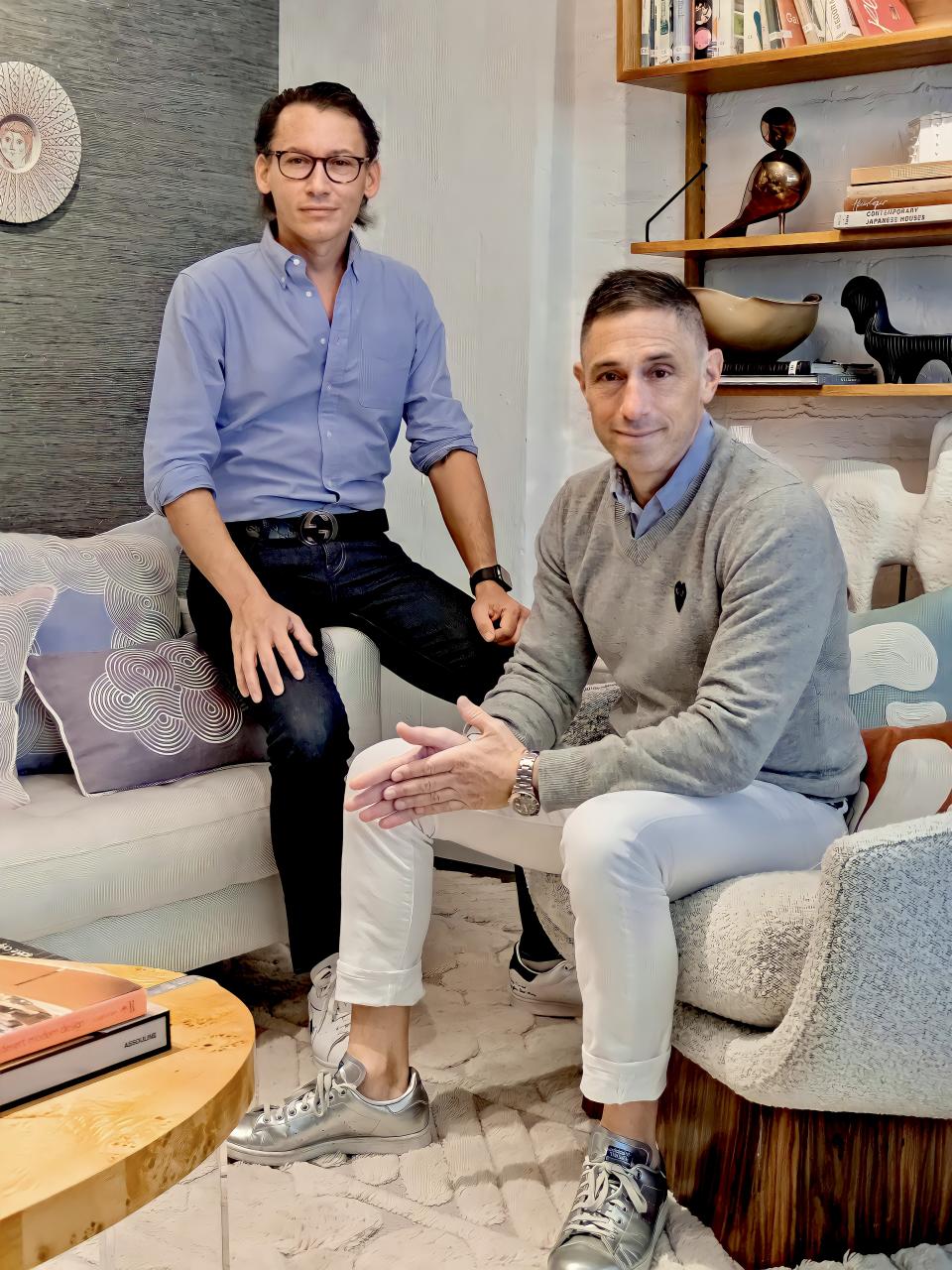
Sonfield was born into the retail business. His father ran the Maison Blanche department store chain in New Orleans and his mother was a fashion coordinator for Fieldcrest Cannon. “Retail is in my blood,” he said. He took the traditional route, working for May Department Stores Co., Macy’s, Bed, Bath & Beyond and ultimately The Company Store, where he served as president and prepared it for sale to Home Depot. It was then that he got a call that Jonathan Adler was looking for a CEO.
“I was sitting in a chair looking at my Jonathan Adler Lacoste pillow,” he recalled. “It’s a brand that, as a home store person, I fell in love with a long time ago. It was a great blind date. I took the job.”
Sonfield jumped right in, turning his attention first to the company’s fleet of retail stores. At the time, there were more than 20 stores, but many of those locations were less than desirable. “We did what everybody was doing: we found good, cheap real estate in malls and expanded,” he said.
History had proven that Jonathan Adler retail could be successful, but rather than operating a large number of stores around the country, it was a matter of operating the right stores in the right locations.
Adler opened his first store in 1998 in SoHo, a 500-square-foot space where he ran the register and his pottery studio was in the basement.
“It was wildly profitable,” Adler said. “I was so naïve I had no idea what I was doing, which is the story of my life, bumbling into things. When Justin came on, we were in this transition period where we were pivoting.”
The store fleet was reduced to the current nine, and they were recreated to be more like showrooms, individualized for each community. The West Village location, for example, is more gift-oriented while the Lexington Avenue store is designed like a colorful, modern home.
And sales doubled.
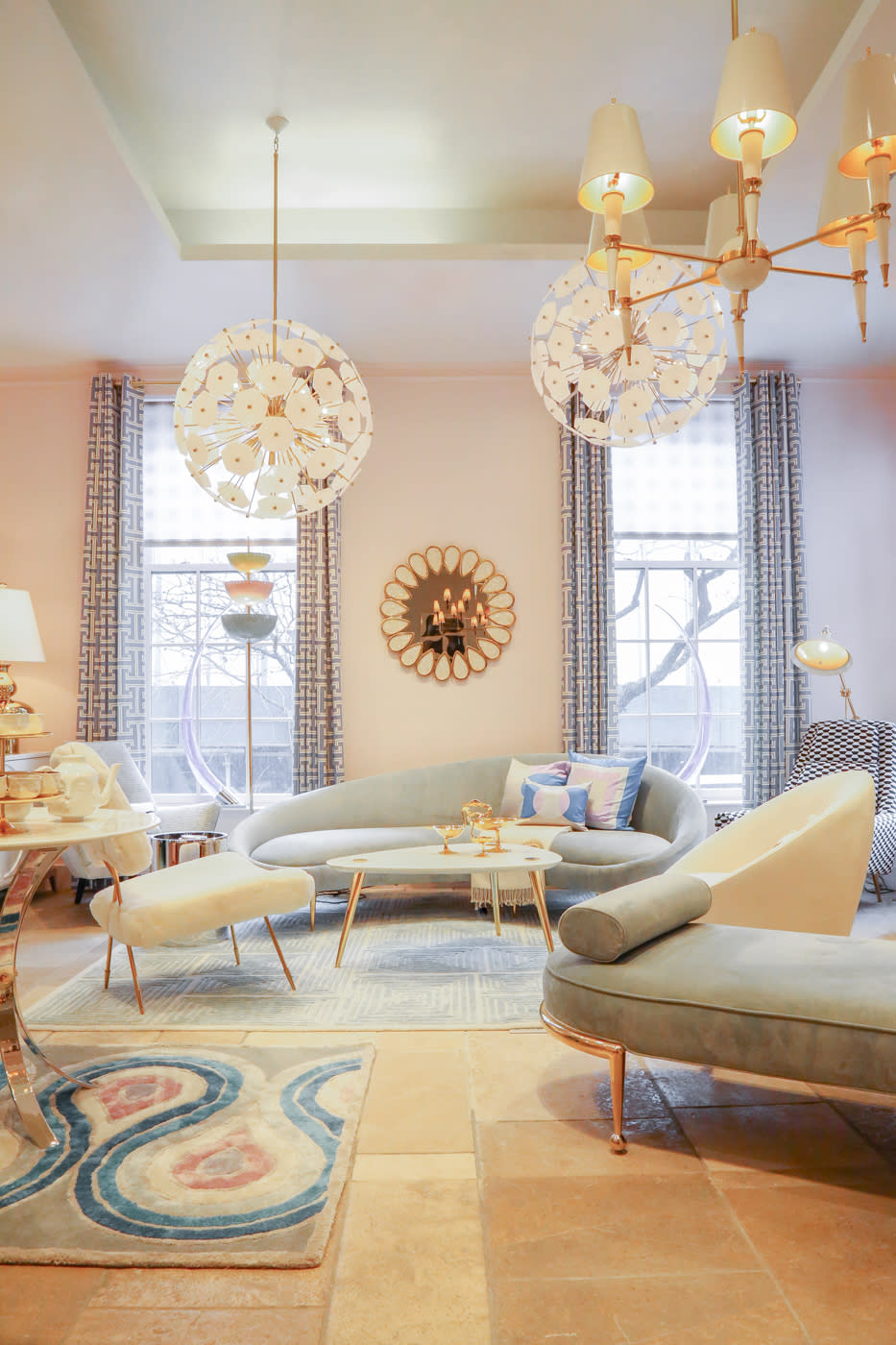
“It’s a testament to retail being done in an intelligent way,” Adler said. “It’s not a one-size-fits-all model. Our stores are all tailored to the environment, it’s not a formula. It’s not dissimilar to how I approach design projects.”
“Jonathan does all of this product, and stores like this help you really understand it,” Sonfield said, pointing to the bedroom set that was recently installed in the Upper East Side unit after the launch of that new category of product.
Next up is a store at the American Dream mall, which is expected to open in early November.
The location is not surprising, given the fact that in September when the luxury wing opened it showcased an Adler-designed interior with “sitting salons,” koi ponds, a sculpture garden and 20-foot versions of his vases. Earlier, Adler had designed 31 VIP skybox suites at the center’s water park focused around exotic locales.
“We did 30 cabanas and each one represents a different dream destination, from Bali to Capri,” Adler said. “When I was tasked with the job, I said they have to be as visually creative as the rest of this mall so we cranked the glamour to 11 because everything in that mall is unimaginable, at a living-for-kicks level that is just mad. But what’s so fascinating about it is when you hear that, you think Las Vegas. It is Las Vegas, but chic — the fantasy with a different taste level.”
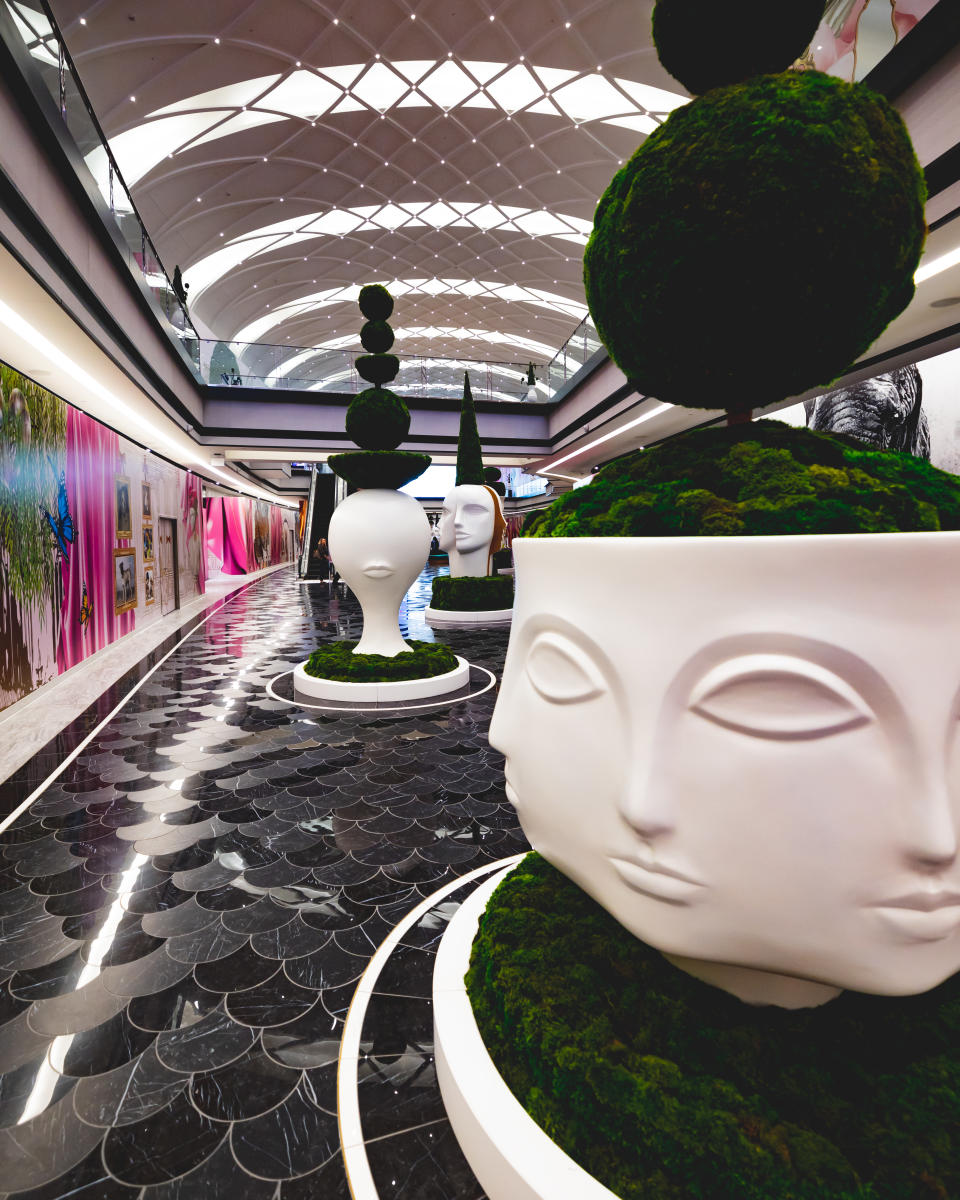
When Ken Downing, the one-time Neiman Marcus fashion director who is chief creative officer for Triple Five Worldwide/American Dream, tasked Adler with the job, he didn’t put any restrictions on the designer. “There were no limits to how fantastical I could be,” Adler said. “The message was, ‘Make it more fantastical, more theatrical.’ And I was like, ‘OK, b—h, it’s on.’ You don’t have to ask me twice.”
Downing called Adler’s work at American Dream “unexpected, outrageous, over-the-top. Jonathan Adler’s imagination knows no bounds. Collaborating with Jonathan and his team is always a tour de force as proof of our ‘Muse’ sculpture garden at American Dream in The Avenue, our luxury wing. Jonathan’s super-sized vessels topped with fantastical topiaries by Miami designer Paloma Teppa of Plant the Future, proves there is no project too big for Jonathan. Within weeks, the ‘Muse’ sculpture garden has become an iconic destination for American Dream guests.”
Early next year, another store will open in SoHo when Jonathan Adler Enterprises relocates its headquarters into a 10,000-square-foot building on West Broadway between Spring and Broome Streets. It will house the corporate offices, design studio, Adler’s pottery studio that will visible to the public for the first time — “I’m going to be coming out from behind the curtain,” he said — and a 2,000-square-foot store. “It’ll be an all-in-one fantasy place for me to be me,” he added.

Also in 2022, the Dallas boutique will double in size to 6,500 square feet. Texas is the brand’s third-largest market after New York and California.
Although the current stores are fairly sizable, they still don’t have room to house every product Adler offers. The Lexington Avenue flagship, for example, only carries 65 percent of the assortment, Sonfield said.
Jonathan Adler also benefited during the pandemic as people stopped traveling and invested in upgrading their homes, Sonfield said. The company doubled down on producing eye-catching products that succeed in lifting spirits of a pandemic-weary customer base, and it paid off.
“We knew we could lean into it and people could have a happier life at home,” Sonfield said. The company’s games and candles were early top sellers, and as everyone started to use Zoom to communicate, Jonathan Adler products started making their appearance in the backgrounds. “Then the product in the pictures started selling in big ways, and I said, ‘I think we’re going to be OK’,” Sonfield said, adding that 85 percent of the visitors to the website are new to the brand and help keep the momentum going.
“We’ve been successful because we’ve been unbridled and authentic and have tried not to follow either trends or conventional wisdom,” Adler said. “That’s not to suggest I’m some brilliant maverick, but we decided to continue to push as hard as we could aesthetically and not be conservative. That’s served us well during the pandemic and beyond.”
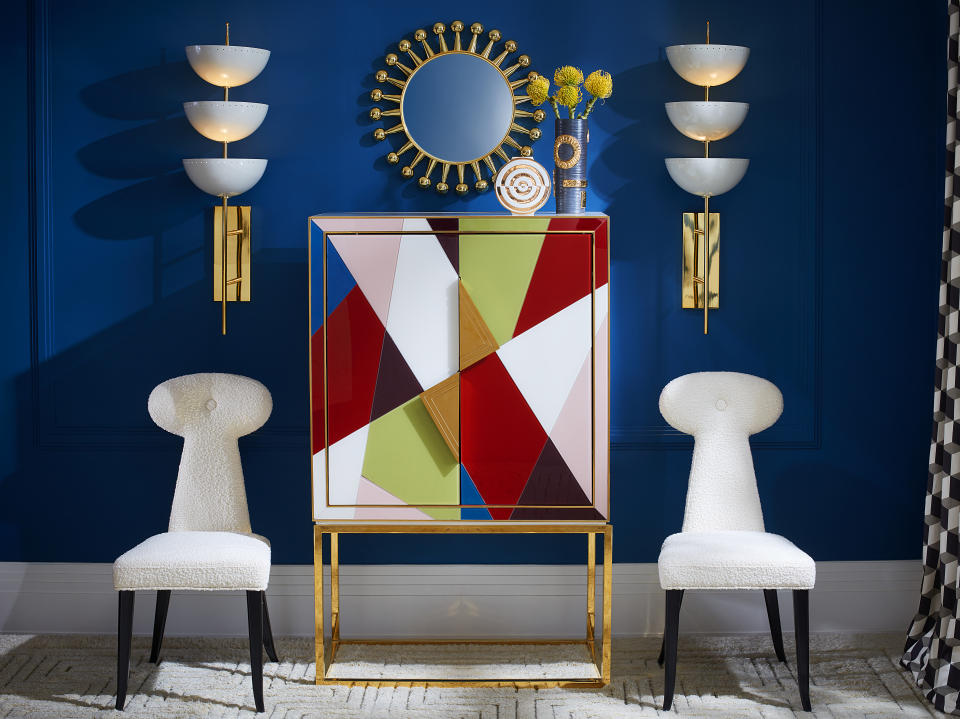
It’s definitely bolstered the bottom line. Sonfield said the brand will pass $100 million in sales by the first half of next year. “We’ve effectively doubled our business from 2019. And we’re up 55 percent this year, so last year was a success as well. We think we can double our business again in four years. We’re very optimistic about what we can achieve.”
Furniture represents 40 percent of the company’s sales today and is its largest category, followed by decorative accessories, which account for 17 percent; pottery, which is 11 percent, and tabletop, which is 10 percent. Textiles, which include rugs, pillows, throws and now bedding, are also popular, accounting for 7 percent of sales, and the Jonathan Adler universe also includes lighting, candles and fragrance. Within each of these categories, there are dozens of subcategories.
“To me, it’s about Justin and I collaborating and having a very clear vision and supporting the right businesses with the right resources,” Adler said. “Even though I make a ton of different stuff, we’re not overly distracted.”
He does have one benchmark that every product must reach in order to become part of the Jonathan Adler assortment. “My gauge is: if your heirs won’t fight over it, we won’t make it. That could mean a $24 mug or a $6,500 cabinet. My grandmother was chic and glamorous and when she died, my brother and sister and I literally had fistfights over her tchotchkes. I said I want to be the guy who engenders fistfights between people in the future.”
Sonfield is still amazed with Adler’s creativity, even after peeking behind the curtain for the past two-plus years. “He’s so damn talented. It’s not just a sketch board and a mood board. Every piece is touched and felt. For someone like me, who used to say to my design teams, ‘Do you really believe where this is going?’, I know he really believes in this. And as a merchant, you need that.”
Adler interjected: “My little brain is exclusively focused on product — it’s a blessing and a curse.”
He looks to the fashion industry as a model. “I’ve always been inspired more by the fashion business than the home business,” he said. “In the home business, people are more restrained, but in the fashion business, people try to be dynamic each season and that model for creativity has always made so much more sense to me than the more-restrained approach. We’re at the intersection between fashion and home.”

That’s a big part of what has set the company apart — its creativity and authenticity. “In the home space, there are not that many authentic brands,” Sonfield said. “There are a lot of licenses and others that have an incredible DNA, but none that tell a story with this much authenticity — and we’re going to lean into it.”
That means at both the company’s own stores as well as its wholesale accounts, which include high-end retailers such as Neiman Marcus, Saks Fifth Avenue and Selfridges. Even though direct-to-consumer accounts for around 75 percent of the company’s overall volume, its business at department and specialty stores is also important — and impressive, doubling since 2019, Sonfield said.
The relationships are strong.
“Our customers expect Neiman Marcus and Horchow to offer world-class brands and experiences,” said Russ Patrick, senior vice president and general merchandise manager of gifts, home, men’s and children’s for Neiman Marcus. “Jonathan Adler exemplifies this with an extraordinary assortment of home décor, pillows, pottery, furniture, games and so much more. Our luxury customer loves Jonathan Adler and the business is one of our top performers in the home category. Over the last year, we have seen significant growth together and have worked on a number of exclusive collaborations that were very popular. Jonathan Adler products are instantly recognizable, fun and will brighten anyone’s day.”
Collaborations, in fact, are another success path for the brand. Over the years, Adler has partnered with everyone from H&M, Uniqlo and Lacoste to Fisher Price, SoulCycle, Motorola, Garmin and Chandon. In August, he created a line with Rugables, a washable rug brand, and within the first 90 days, sales were three times what had been projected for the year.
“The lesson is: none of the old rules apply,” Adler said. “All of the old paradigms are gone and it’s a fantastic time to be open minded.”
That could one day mean a Jonathan Adler apparel collection. In the past, he has worked with brands such as Seven For All Mankind on a capsule and Mr Turk on swimwear, and his prints have appeared on Toms shoes and Uniqlo dresses, so the idea is intriguing to him. “I tend not to say ‘no’ a lot,” Adler said, “which is why I got fired from so many of my jobs.”
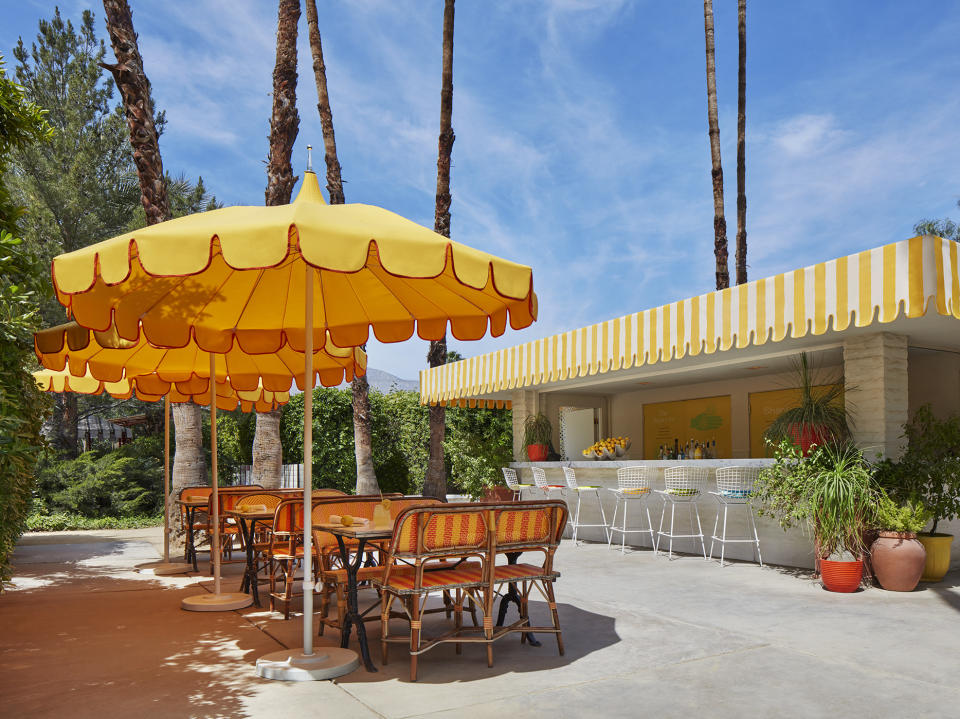
But Sonfield said there actually may be fewer collaborations in the future as the company turns its focus to growing independently. “Things that would traditionally have gone to a license, we’ll now make ourselves, like bedding,” he said. “It’s important to control our own destiny. We don’t have to wait for the bad news on Monday that orders are going to be canceled. We are in control from a marketing and merchandising perspective and don’t have to rely on somebody else’s bottom line.”
Looking forward to the next few years, Sonfield believes there’s no limit for how big Jonathan Adler Enterprises can become, and pointed to Disney as an example.
“My favorite thing in the world is Disney,” he said. “I look at it as a company that just delivers happiness — and it does it through a million different formats, from shoes to theme parks to movies. As a company, I see their growth through acquisitions, understanding and entertaining a customer and showing them happiness. We can be as ambitious — the sky’s the limit. We have this amazing runway of opportunity. We’re going to continue to make epic product in categories and strengthen how we tell the world about it through marketing. I believe our opportunity is limitless.”
Best of WWD
Sign up for WWD's Newsletter. For the latest news, follow us on Twitter, Facebook, and Instagram.

